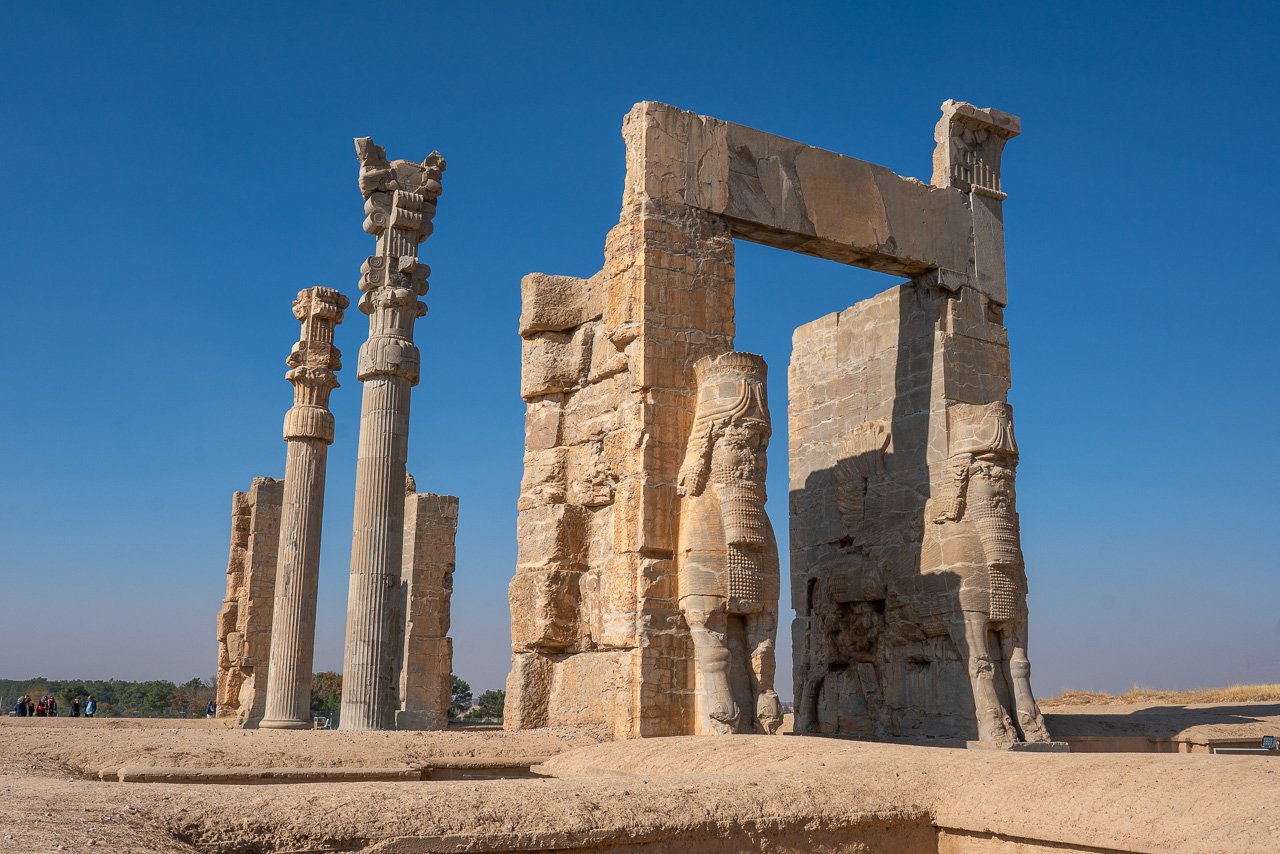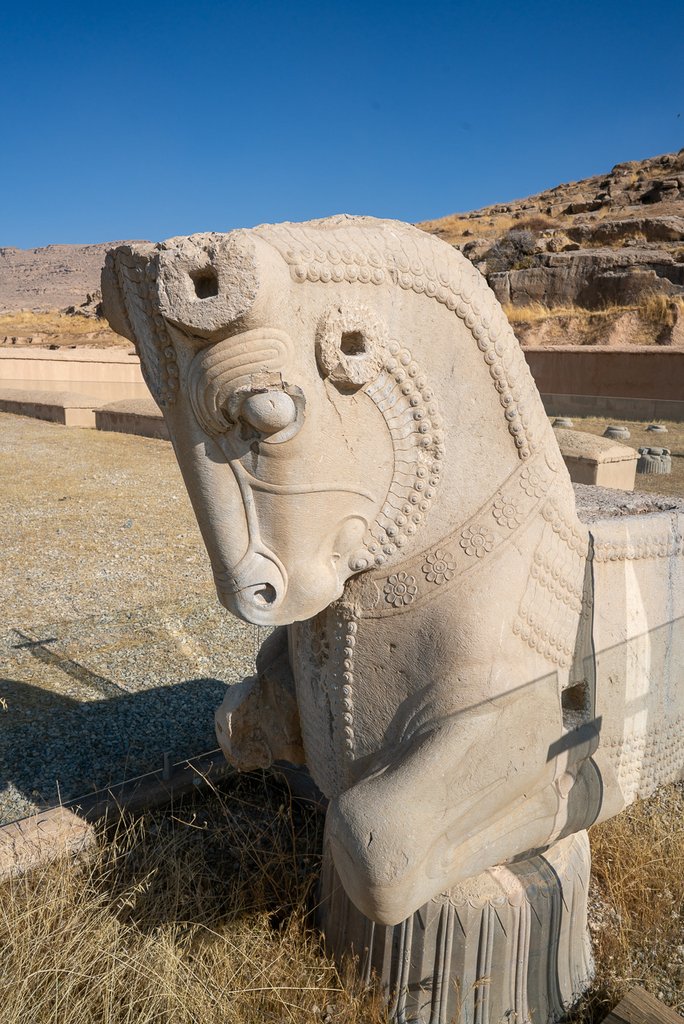
Persepolis
Persepolis
The ancient palace city of the Persian Great Kings
The ancient Persian palace city of Persepolis was founded by Darius I in southern Iran in 520 BC.
At the foot of the mountain Kuh-e Mehr a terrace of 15 ha was laid out, on which in the course of time 14 partly gigantic buildings were erected. Among them are the palaces of the Persian Great Kings Darius I, Xerxes, Artaxerxes I. and Artaxerxes II.
Above Persepolis two rock tombs were hewn into the mountain, in which probably Artaxerxes II. and Artaxerxes III. were buried.
When in 330 BC Alexander the Great marched with his troops towards Persepolis, King Darius III fled, while many of his followers preferred to commit suicide.
To be able to remove the legendary gold and silver treasures from the treasury, Alexander the Great is said to have needed 10,000 pack animals and 5000 camels.
Shortly afterwards Persepolis burned to the ground.
Since Alexander the Great usually left conquered cities and palaces as undamaged as possible, some historians believe that the fire may have broken out accidentally during the victory celebration.
However, since Xerxes had the Acropolis in Athens burned down 50 years earlier during his campaign against the Greeks, and since the palace of Xerxes in particular shows the strongest traces of fire, most historians assume that Alexander the Great also set Persepolis on fire in revenge.
Fortunately, some 30,000 Persian clay tablets were hardened by the fire and thus remained particularly well preserved for over 2,500 years. These clay tablets also prove that the palaces in Persepolis were not built by slaves but by paid craftsmen.
Since 1979 the ruins of Persepolis have been a UNESCO World Heritage Site.
Comments
No Comments
